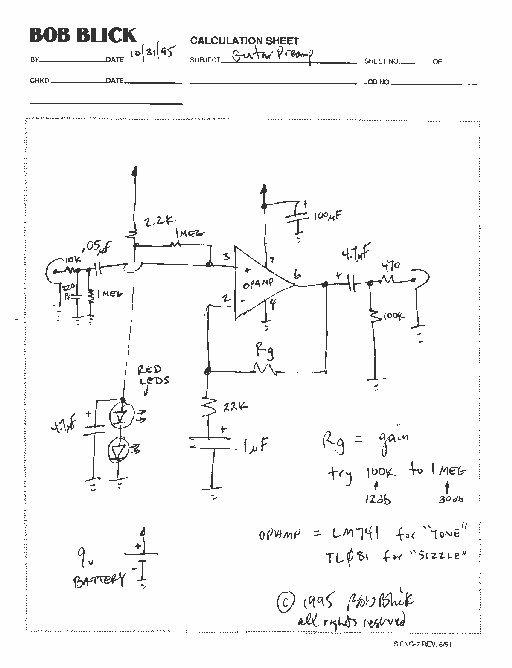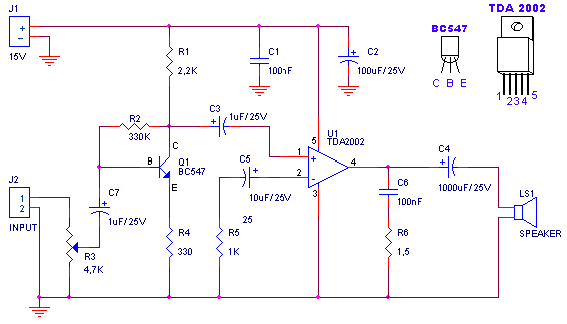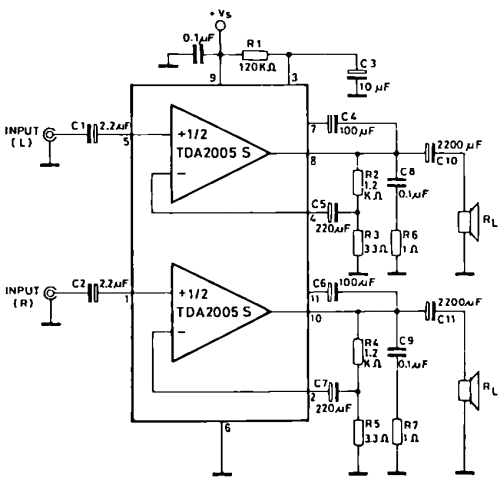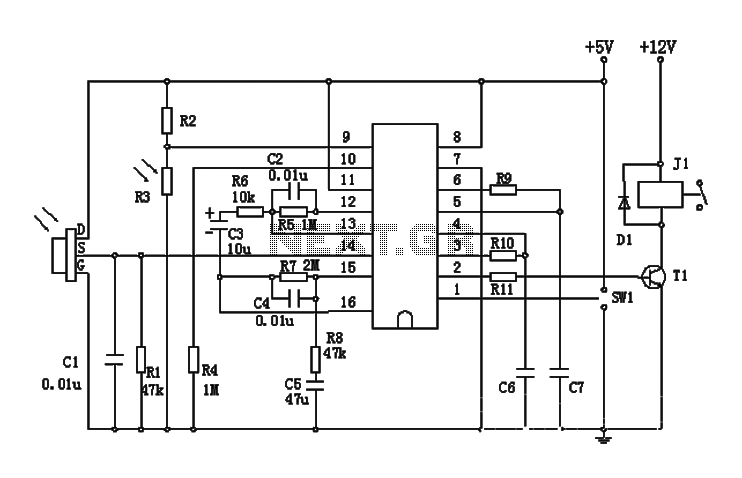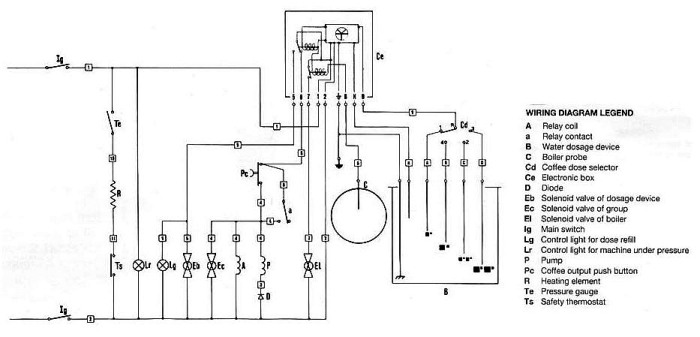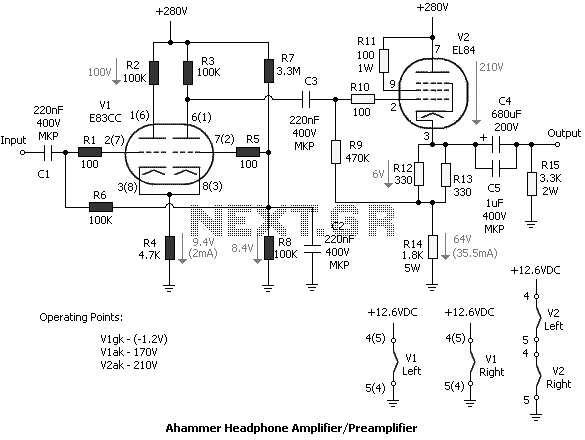
A constant current source of the differential amplifier circuit
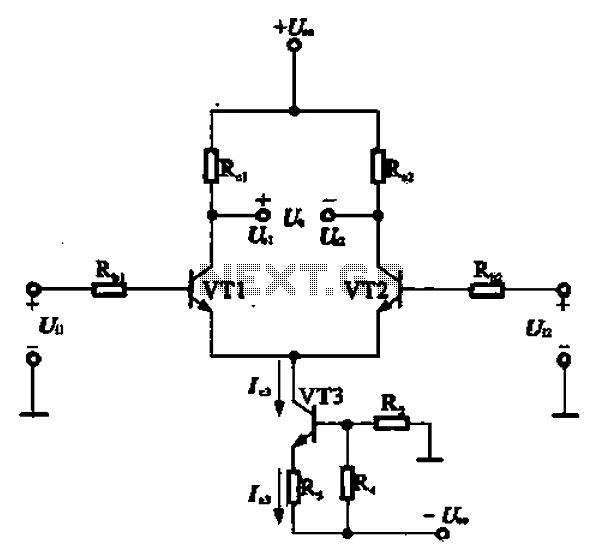
A constant current source is utilized in the differential amplifier circuit, which includes an emitter resistor. In this configuration, an increase in the output voltage (Ua) is not desirable. To ensure that Ua remains stable, the supply voltage (Ucc) can be reduced. This circuit employs a transistor as a constant current source for the differential amplifier. The transistor (VT3) provides a bias voltage to maintain the amplifier in an active state. The operation is such that when the potential rises, the voltage across the resistor (I * 3Re) must increase, but it remains constant, causing the output voltage (U) to decrease. This reduction leads to a decrease in the current (Si), which is suppressed to maintain a constant current output, thus preventing zero drift in the amplifier's operation.
A constant current source circuit is critical in ensuring the stability and performance of differential amplifiers. In this design, the differential amplifier employs an emitter resistor to set the operating point and improve linearity. The constant current source, implemented using a transistor (VT3), plays a pivotal role in maintaining a steady current through the amplifier, regardless of variations in load or supply voltage.
The transistor VT3 is configured to provide a bias voltage that keeps the differential amplifier in its active region, which is essential for linear amplification. As input signals cause fluctuations in the potential at the base of VT3, the circuit dynamically adjusts to maintain a constant current. When the output voltage (Ua) increases, it is necessary to control the supply voltage (Ucc) to prevent undesired increases in output. The design ensures that as the voltage across the emitter resistor (I * 3Re) increases, the current through the transistor is regulated to prevent any drift in the output signal.
This feedback mechanism is crucial for maintaining the performance of the amplifier, particularly in applications where precision is required. By suppressing variations in the current (Si), the circuit effectively mitigates zero drift, ensuring that the amplifier operates consistently over time. The careful selection of the emitter resistor value and the characteristics of the transistor used in this configuration are vital for achieving the desired performance metrics, including bandwidth, noise performance, and linearity. The overall design emphasizes the importance of stability and accuracy in differential amplifier circuits, making it suitable for a wide range of electronic applications.A constant current source of the differential amplifier circuit (2) having a constant current source of the differential amplifier with emitter resistor in differential amplifi er, where larger, a Ua also increases, which is not appropriate. In order to make every time increases, Ucc can be lower, triode available, this circuit is called a constant current source transistor of the differential amplifier, as shown in FIG. Figure, s, played a role in the partial pressure for VT3 base provides a bias voltage to work in the enlarged state.
How it works: When the potential of the rise, Si, Si increases, the voltage across I * 3Re should be increased, but remained unchanged Gong, forcing U. Decreases, so that the island is reduced, causing reduced Si, such as the rise is suppressed to maintain the constant 3, and this is the role of the constant current source of the transistor VT3.
Si unchanged, Si suppressed, as can not be increased, so as to suppress the zero drift.
A constant current source circuit is critical in ensuring the stability and performance of differential amplifiers. In this design, the differential amplifier employs an emitter resistor to set the operating point and improve linearity. The constant current source, implemented using a transistor (VT3), plays a pivotal role in maintaining a steady current through the amplifier, regardless of variations in load or supply voltage.
The transistor VT3 is configured to provide a bias voltage that keeps the differential amplifier in its active region, which is essential for linear amplification. As input signals cause fluctuations in the potential at the base of VT3, the circuit dynamically adjusts to maintain a constant current. When the output voltage (Ua) increases, it is necessary to control the supply voltage (Ucc) to prevent undesired increases in output. The design ensures that as the voltage across the emitter resistor (I * 3Re) increases, the current through the transistor is regulated to prevent any drift in the output signal.
This feedback mechanism is crucial for maintaining the performance of the amplifier, particularly in applications where precision is required. By suppressing variations in the current (Si), the circuit effectively mitigates zero drift, ensuring that the amplifier operates consistently over time. The careful selection of the emitter resistor value and the characteristics of the transistor used in this configuration are vital for achieving the desired performance metrics, including bandwidth, noise performance, and linearity. The overall design emphasizes the importance of stability and accuracy in differential amplifier circuits, making it suitable for a wide range of electronic applications.A constant current source of the differential amplifier circuit (2) having a constant current source of the differential amplifier with emitter resistor in differential amplifi er, where larger, a Ua also increases, which is not appropriate. In order to make every time increases, Ucc can be lower, triode available, this circuit is called a constant current source transistor of the differential amplifier, as shown in FIG. Figure, s, played a role in the partial pressure for VT3 base provides a bias voltage to work in the enlarged state.
How it works: When the potential of the rise, Si, Si increases, the voltage across I * 3Re should be increased, but remained unchanged Gong, forcing U. Decreases, so that the island is reduced, causing reduced Si, such as the rise is suppressed to maintain the constant 3, and this is the role of the constant current source of the transistor VT3.
Si unchanged, Si suppressed, as can not be increased, so as to suppress the zero drift.
